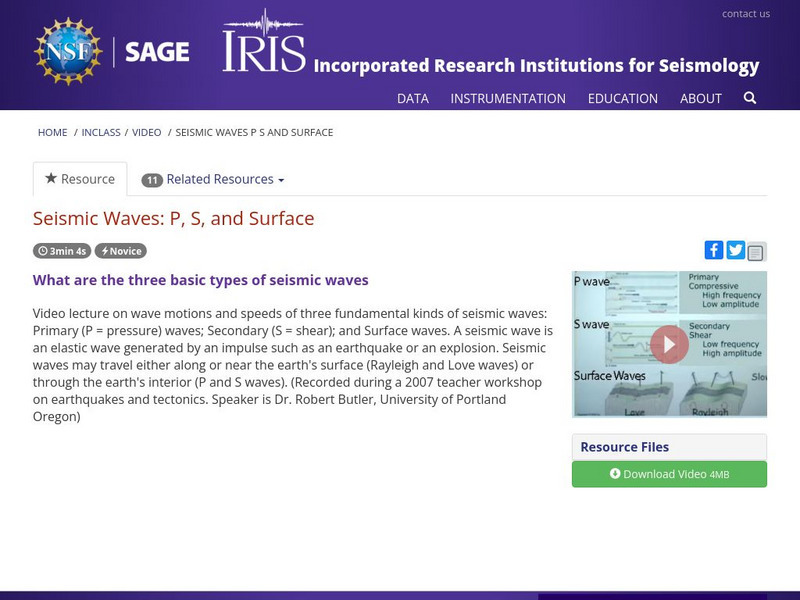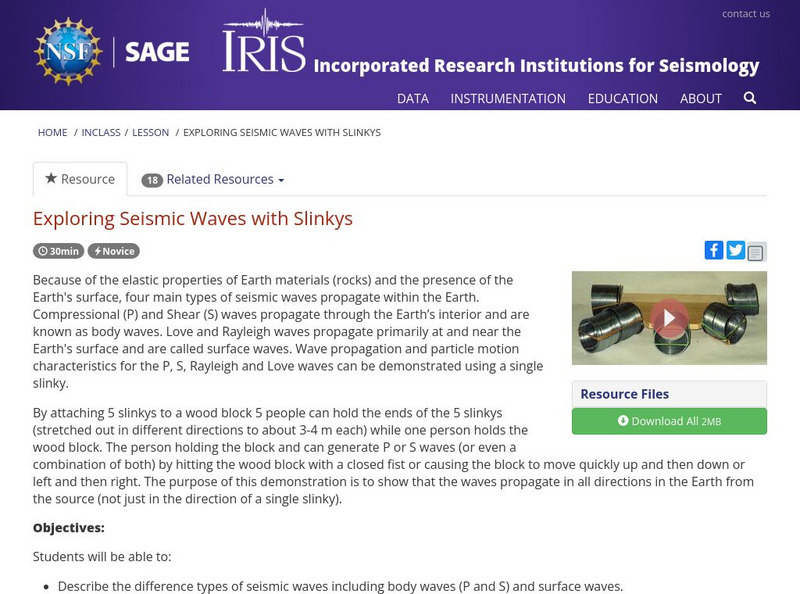Khan Academy
How We Know About the Earth's Core
The big question is, how do we know about the composition of the earth's core? Sal explains that at 105 degrees from the source point of an earthquake, the phenomenon of the p wave shadow zone leads us to conclude that the waves are...
Khan Academy
Refraction of Seismic Waves, Cosmology & Astronomy
Mr. Khan uses the metaphor of a car to help explain the change in the direction of waves as they hit a boundary between two mediums. He then goes on to explain the relationship between the earth's structure and density and the waves'...
Fuse School
Structure and Composition of the Earth
Why is Earth different from other planets? What makes it so special, anyway? It's only fitting to delve into how the "parent" rock was formed in the first installment of a seven-part series about rocks and rock formation. Amateur...
Crash Course
Orbitals
What do molecules look like anyway? A video explores the orbitals of molecules that determine their shape, including S and p orbitals and their hybridization. It also introduces sigma and pi bonds so learners can fully grasp the...
Khan Academy
Seismic Waves, Earth Geological and Climatic History, Cosmology and Astronomy
Use a video on seismic waves to explain the differences between S and P waves, as well as the details that they provide about the composition of the rock.
Khan Academy
Why S-Waves Only Travel in Solids, Cosmology and Astronomy
Starting with a clear diagram to demonstrate how a wave actually forms, an informative video will provide a great summary of s-wave travel. It explains the difference between polar bonds in liquids and the stronger ionic and covalent bonds.
Incorporated Research Institutions for Seismology
Iris: Seismic Waves: P, S, and Surface
Video lecture on wave motions and speeds of three fundamental kinds of seismic waves: Primary (P = pressure) waves; Secondary (S = shear); and Surface waves. [3:10]
Incorporated Research Institutions for Seismology
Iris: Exploring Seismic Waves With Slinkys
This demonstration shows that seismic waves propagate in all directions in the Earth from the source (not just in the direction of a single slinky). [5:13]







